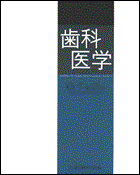Volume 75, Issue 1
Displaying 1-14 of 14 articles from this issue
- |<
- <
- 1
- >
- >|
-
Article type: Article
2012 Volume 75 Issue 1 Pages 1-5
Published: March 25, 2012
Released on J-STAGE: June 08, 2017
Download PDF (7089K) -
Article type: Article
2012 Volume 75 Issue 1 Pages 6-11
Published: March 25, 2012
Released on J-STAGE: June 08, 2017
Download PDF (11709K) -
Article type: Article
2012 Volume 75 Issue 1 Pages 12-17
Published: March 25, 2012
Released on J-STAGE: June 08, 2017
Download PDF (2972K) -
Article type: Article
2012 Volume 75 Issue 1 Pages 18-21
Published: March 25, 2012
Released on J-STAGE: June 08, 2017
Download PDF (465K)
-
Article type: Article
2012 Volume 75 Issue 1 Pages A1-A2
Published: March 25, 2012
Released on J-STAGE: June 08, 2017
Download PDF (237K) -
Article type: Article
2012 Volume 75 Issue 1 Pages A3-A4
Published: March 25, 2012
Released on J-STAGE: June 08, 2017
Download PDF (235K) -
Article type: Article
2012 Volume 75 Issue 1 Pages A4-A5
Published: March 25, 2012
Released on J-STAGE: June 08, 2017
Download PDF (250K) -
Article type: Article
2012 Volume 75 Issue 1 Pages A6-A7
Published: March 25, 2012
Released on J-STAGE: June 08, 2017
Download PDF (238K) -
Article type: Article
2012 Volume 75 Issue 1 Pages A7-A8
Published: March 25, 2012
Released on J-STAGE: June 08, 2017
Download PDF (219K) -
Article type: Article
2012 Volume 75 Issue 1 Pages A9-A10
Published: March 25, 2012
Released on J-STAGE: June 08, 2017
Download PDF (230K) -
Article type: Article
2012 Volume 75 Issue 1 Pages A10-A11
Published: March 25, 2012
Released on J-STAGE: June 08, 2017
Download PDF (226K) -
Article type: Appendix
2012 Volume 75 Issue 1 Pages App6-
Published: March 25, 2012
Released on J-STAGE: June 08, 2017
Download PDF (14K) -
Article type: Article
2012 Volume 75 Issue 1 Pages A13-A14
Published: March 25, 2012
Released on J-STAGE: June 08, 2017
Download PDF (223K) -
Article type: Article
2012 Volume 75 Issue 1 Pages A15-A16
Published: March 25, 2012
Released on J-STAGE: June 08, 2017
Download PDF (216K)
- |<
- <
- 1
- >
- >|
